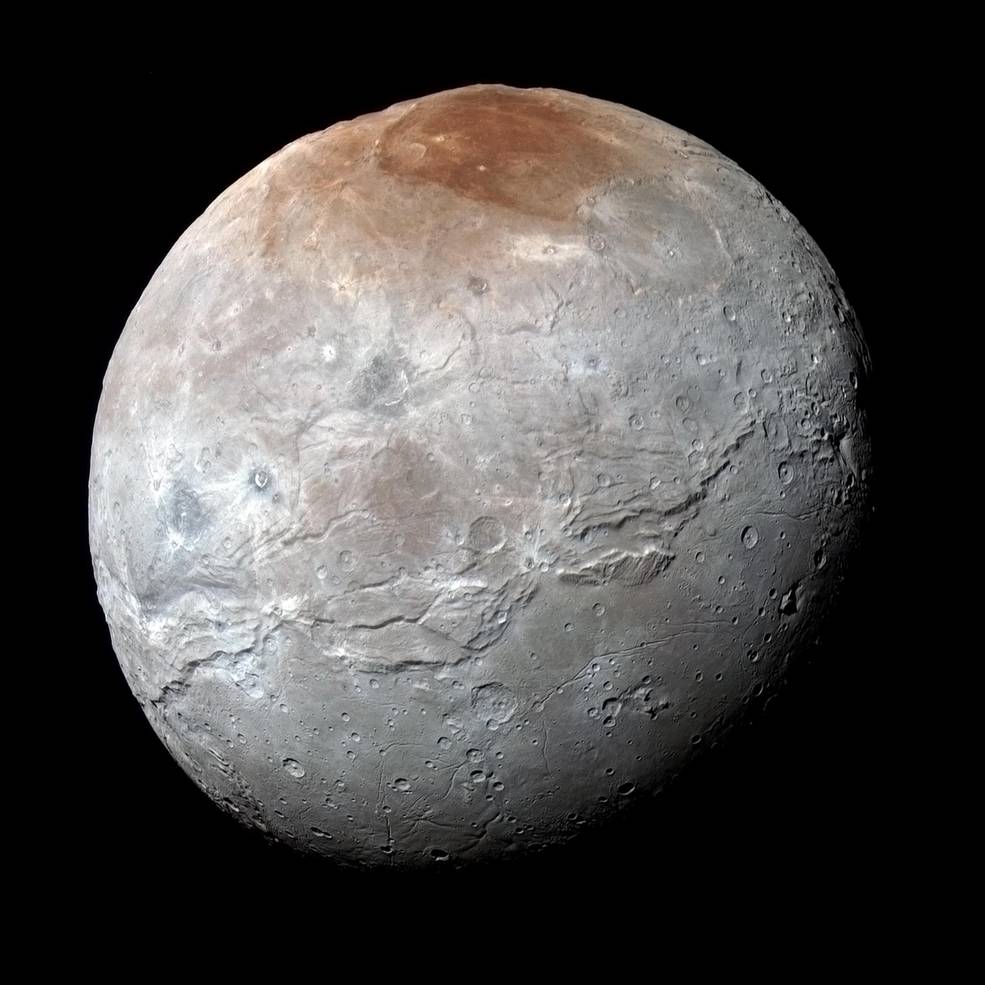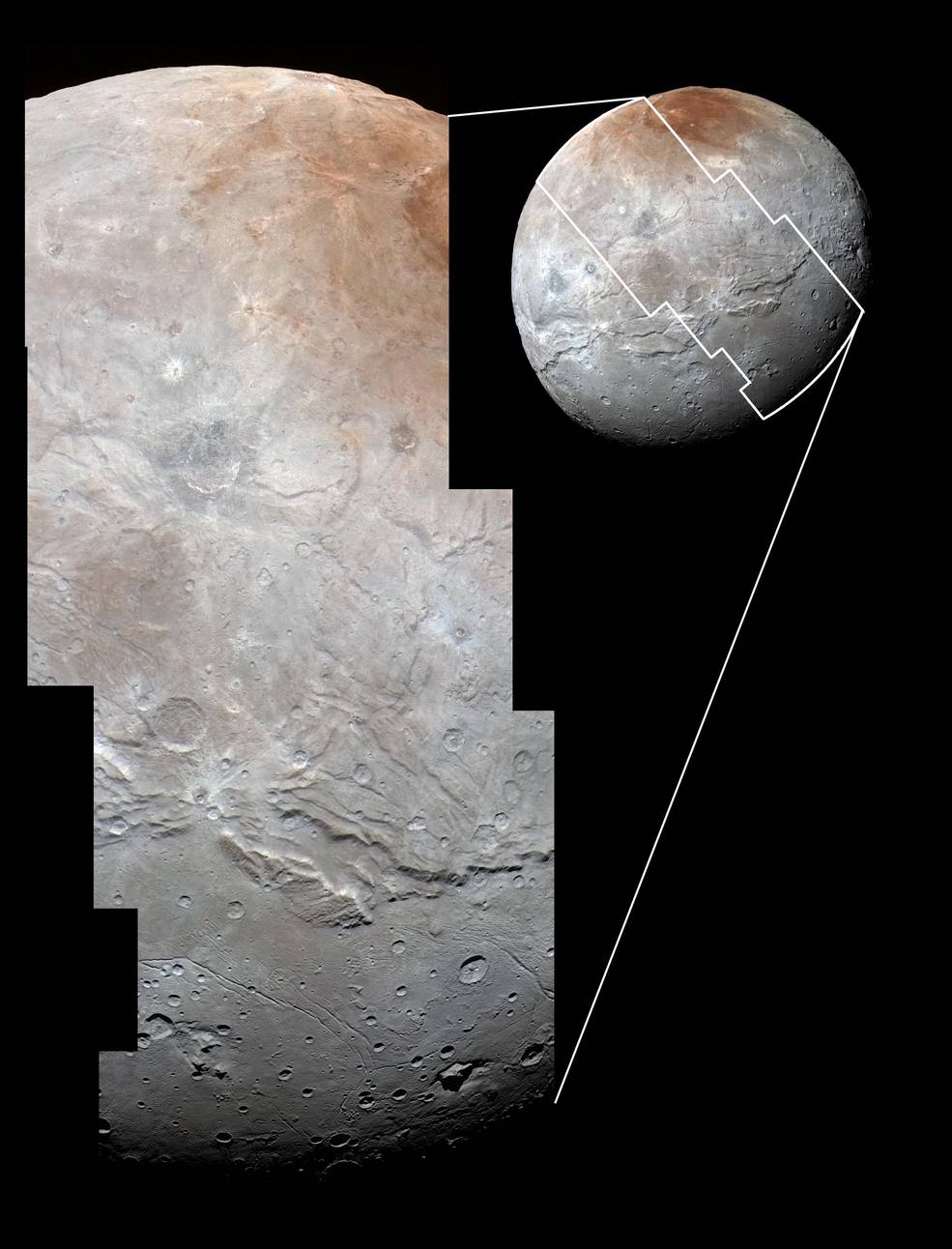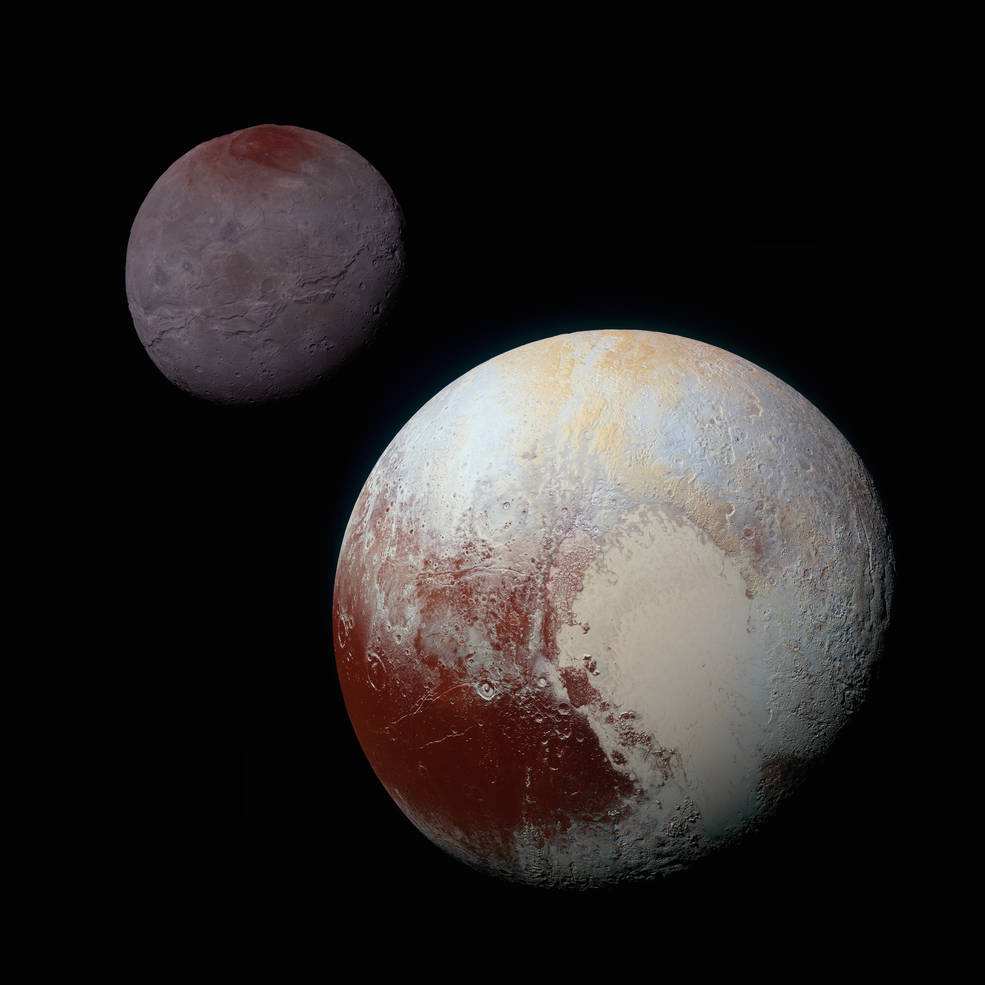The “Canyon” on Charon, the satellite of Pluto, is a giant crust break

A few days ago, the NASA New Horizons probe sent colorful photographs of Charon, the largest satellite of Pluto, to Earth. Now scientists have received another batch of images, the study of which made it possible to study the difficult history of Charon - and it is really complex for a planetoid . In general, it has long been known that Charon, if we compare the sizes of the satellite and the main planet or planetoid, is the largest satellite in the solar system. Its diameter is only half the diameter of Pluto. Previously, scientists believed that this object is covered with a huge number of craters. Instead, it turned out that Charon has many mountains, canyons, plains. Plus, the surface of the Pluto satellite is heterogeneous in composition.
High-resolution images of Charon, received by New Horizons on July 14 and transmitted to Earth on September 21, show scientists a whole "belt", a huge canyon, passing through the entire planetoid. Its length is 1,600 kilometers, which is four times more than the Great Canyon on Earth. Depth - twice as much. It seems that in the past, Charon was very active geologically.

“It seems like all of Charon’s crust has cracked,” says John Spencer, spokesman for the project team. The team also found that the plains south of Charon Canyon are covered by more craters than the region in the north, which is evidence of the relative “youth” of the craters. The smoothness of the plains indicates that Charon was not / is a geologically dead body. In the field, it may be that its smooth surface is due to cryovolcanism. Perhaps earlier under the surface of Charon there was an icy ocean, which, pouring to the surface, renewed the plains, hiding the craters.
All of these conjectures can be confirmed or refuted in the near future, when New Horizons will send to the Earth even better images, as well as additional information about Pluto. Now the probe is located at a distance of about 5 billion kilometers from the Earth, all station systems are functioning normally.

